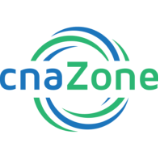Course Description
Geriatric Depression
Course Summary
The evidence shows that depression is a common mental illness but it is not a normal part of aging. Major depression in the geriatric population involves many factors such as genetics, social factors, physical ailments, chronic disease, and emotional factors. A person is born susceptible to having a major depressive disorder, and the condition develops as the person is exposed to specific risk factors. Depending on the clinical picture, major depressive disorder is categorized as mild, moderate, or severe. Major depression can be incapacitating. Screening for depression should be a part of routine health care. Medication and psychotherapy are the mainstays of treatment for major depressive disorder, however, depression can be very difficult to treat. Antidepressants and psychotherapy may not be enough to reduce depressive signs and symptoms. Alternative therapies and self-help can be supportive additions to the person’s treatment plan that can make a major difference in progress.
Course Objectives
- Identify those seniors who are at risk of depression.
- Explain the signs and symptoms of depression.
- Describe the process of conducting the Geriatric Depression Scale
Course Syllabus
Target Audience:
CNA
Credits:
1.0



